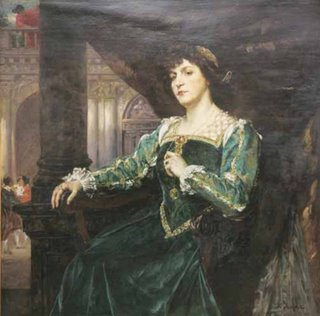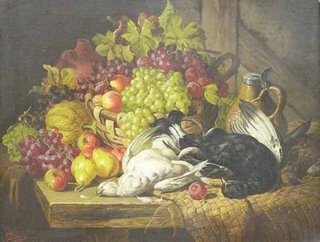By DREW JUBERACox News Service Tuesday, December 27, 2005 ASHEVILLE, N.C. — The great tobacco auctioneers — men named Bum Bum Leggettes and Redcap McLaughlin and Dancin' Jakey Taylor (who jigged as he took bids) and Smokey Joe Burnette (who led buyers in Southern gospel) and Speed Riggs (fastest mouth east of the Mississippi) — they're all gone.
Their run-on chants — a rhythmic hybrid of singing, preaching and speaking in tongues, performed at Looney Tunes speed — have been replaced by the soundless button-mashing of hand-held computers. The auctioneer and the tobacco buyers now stroll past fragrant gold bales lined up inside mostly empty metal warehouses and stare at their screens while bidding in silence, like grown men fixated on Game Boys.
"It's so quiet I feel like I'm in the wrong place," said Brenda Owen McLamb, 58, whose father opened the Dixie Big Burley warehouse decades ago beside the French Broad River, near downtown.
Added Don Smart, a tobacco farmer from nearby Haywood County, "It's like a funeral parlor now."
A scent of finality hangs over the handful of tobacco auctions that opened this week in the Burley Belt of Kentucky, Tennessee, Virginia and North Carolina. A seasonal tradition in the South for more than a century — often accompanied by parades and politicking and the purchase afterward of everything from pickups to braces to Christmas tricycles — the tobacco auction's future now looks bleak.
Just a decade ago, hundreds of warehouses still operated, each filled to capacity. But with smoking's decline, foreign competition and tobacco companies contracting directly with farmers, the number dwindled this year to 15. They'll run through mid-January.
Nobody's sure if any of them will reopen next season.
"I'm kind of surprised even these auctions are going on," said John Van Willigen, co-author of "Tobacco Culture: Farming Kentucky's Burley Belt." "I think it's all but over, basically."
Yet dozens of farmers and onlookers showed up for opening day this week at the last two burley warehouses still operating in Asheville, which before its hippiefication and gentrification was the tobacco center of western North Carolina.
Many farmers came out of the surrounding mountains on a cold, dreary morning to confirm, in a way, that they are still here — "to see," as Smart put it, "if there's life after death."
This year's auctions are the first without price supports and growing quotas, which have been in place since the 1930s. That system was ditched after last year's $10.1 billion federal buyout, which enriched many farmers temporarily but left them uncertain about their future.
"Things are changing, and the system as we've known it is over with. It's the end of an era," said Marty Owen, 39, manager of the Dixie Big Burley warehouse, once run by his father and grandfather. "Over a cup of coffee is a good place to reminisce about the old days, but we have to move forward."
Warren Anders, 68, is trying to adapt from two sides of this brave new world: He farms 60 acres with his four sons and runs the Planters Warehouse, across the river from Dixie Big Burley.
"I've grown tobacco all my life. Tobacco is a good word to me," he said. "It's educated all my children, bought a lot of property, paid all my bills. When I have to contract tobacco, I'll sure quit."
Yet when asked if he'd open his warehouse for auction next year, Anders allowed, "I don't know. I just don't know."
A number of farmers sat this season out, waiting to see the effect the buyout would have on prices before deciding whether tobacco farming was still worth it — or whether, as many farmers have already done, they should sell their land to real estate developers who'll use it for pricey mountain vacation homes.
Others, like David Fisher, 60, from Sylva, N.C., cut their production: He went from 30 acres to seven.
Still others kept farming whatever they could just because it's what they've always done, and what their families have always done.
"I need to do something with my land," said Randell Wilson, 38, who farms sixth-tenths of an acre in Burnsville, N.C.
Wilson, who makes his living working for a metal manufacturing company, brought to the Dixie Big Burley warehouse this year 93 pounds of burley tobacco and his 7-month-old son. He figured he'd be back again next year if the place was still open: His grandfather grew tobacco until he was 80.
"I like the atmosphere of an auction," he said.
The season's first auction was once the equivalent, for tobacco farmers, of baseball's opening day. Anybody who grew anything showed up; some stuffed their entire crop in the trunk of their car. Many arrived with their wives and children, sometimes setting babies atop their crop — or pregnant wives beside it — in hope of squeezing from some soft-hearted buyer an extra cent or two.
The atmosphere this year was more subdued at the opening hosted by Planters Warehouse. There was strong coffee and ham biscuits for early arrivals, a few speeches by farm agency representatives, a prayer. Everybody seemed happy to see everybody else — like classmates at a reunion.
Perhaps the most familiar face belonged to Chuck Jordan, a former world champion auctioneer known for his penetrating voice and clear diction. He drove from Danville, Va., to run the show, though now he tracked bids not with his voice, but with a stylus used to punch them into a computer.
"I just can't walk away from something I've done all my life," said Jordan, 62. "It's a part of me."
Many farmers have found it more difficult to make the transition. In North Carolina alone, farmers in 2003 raised less than half the tobacco they raised six years earlier. Some growers have tried to raise sod, Christmas trees, vegetables. But few crops generate the money tobacco can.
Some say more is being lost here than just a cash crop.
"While we're looking to encourage transition in the economy, we don't need to grow any more high-end second homes," said Ray Rapp, a state representative attending the opening auction. "We want to see the agricultural base preserved. It's part of what makes these communities special places to work and live. It's not just a commitment to a cash crop, but to a way of life."
The average price at the opening day's two auctions was a little above $1.50 a pound. Some farmers, like Smart, said that's about what they expected. Others wondered how they could continue to farm. For many, it was just barely enough.
Most of those who'd spent the day inside the big, drafty warehouses tried to be optimistic.
"I remember 10 years ago everybody said it looked bad," said McLamb, at the Dixie Burley warehouse. "We haven't closed our doors yet."
Drew Jubera writes for The Atlanta Journal-Constitution









